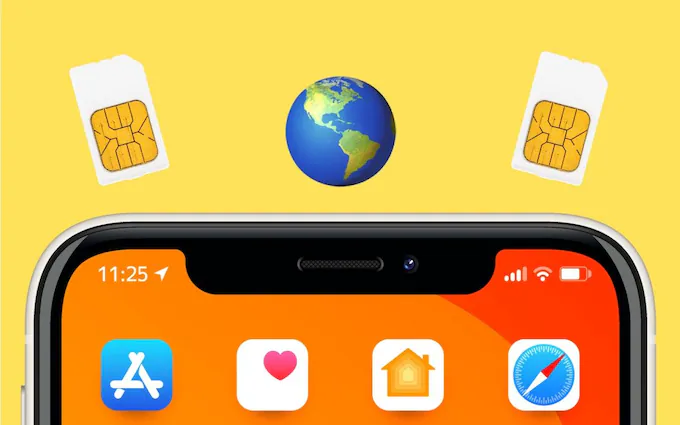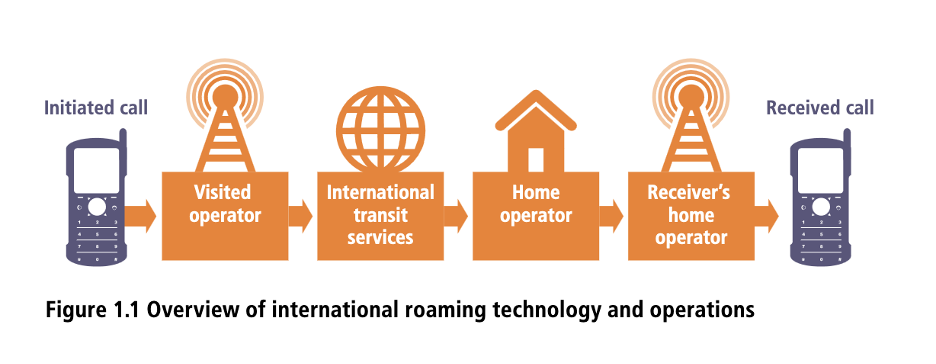The Technology Behind Roaming: How Your SIM Connects Globally
 Lakshay Dhoundiyal
Lakshay Dhoundiyal
International travel is so much easier, largely because the good contact through a mobile phone. A connection this clear is achieved through roaming, which is a system where your SIM card communicates with foreign networks. In this blog post, we're looking at the technical mechanism behind roaming and how your SIM card enables global connectivity.
Understanding Roaming and It’s Types
Roaming is a critical feature that enables mobile users to maintain connectivity when traveling outside their home network’s coverage area. This functionality allows users to make calls, send texts, and use mobile data while abroad, ensuring seamless communication regardless of location. According to the Global System for Mobile Communications (GSMA), over 1.5 billion people use roaming services each year. Roaming can be classified into two types:
National Roaming: This occurs when a mobile user accesses a different carrier's network within their home country. For example, if a user travels to a rural area where their home carrier has no coverage, they may connect to a partner network to continue using their services. National roaming is essential for ensuring consistent service availability, especially in less populated regions.
International Roaming: This type involves accessing the services of a home carrier while in a foreign country. When a user travels internationally, their device connects to a local network that has a roaming agreement with their home carrier. This allows them to receive calls, send messages, and use data as if they were still in their home country, albeit usually at higher rates.

The Role of SIM Card
Subscriber Identity Module (SIM) card is an important part of mobile communication. It holds important information and the following are some of such information:
International Mobile Subscriber Identity (IMSI): An identity to identify you, which serves to authenticate your account.
Keys for encryption: Ensure that the communication between your computer and the network is secure.
Service provider information: Indicates which carrier you are registered with.

How Roaming Works: The Main Process
Authentication and Network Selection
When you travel abroad, your mobile device communicates with the local network through several steps:
Power On: When you turn on your phone, it searches for available networks.
Network Registration: Your device sends its IMSI to the local network, requesting access.
Authentication: The local network checks the IMSI against the Home Location Register (HLR) of your home network. This step verifies your identity and ensures you have roaming privileges.
Home Location Register (HLR) and Visitor Location Register (VLR)
Home Location Register (HLR): This database contains information about each subscriber, including their service plan, and is maintained by your home network.
Visitor Location Register (VLR): When you connect to a foreign network, the VLR temporarily stores your information, allowing the network to facilitate services such as calls and data.
Billing and Charges
- Once authenticated, roaming charges apply based on your carrier’s agreements with the local network. These agreements dictate the rates for calls, texts, and data usage. According to a report by Deloitte, international roaming charges can vary significantly, often ranging from $0.50 to $3.00 per minute for calls, depending on the countries involved.

Future of Roaming Technology and the Impact of 5G
The more advanced technology becomes, the more it changes our behavior in connecting with the rest of the world. Innovations like eSIM technology transform the landscape of mobile roaming. This capability to swap between carriers without even needing to insert a physical SIM card makes it easier to access local networks at competitive rates. This further takes away the barriers regarding better roaming experiences with the rollout of 5G networks. More data speed and lower latency will be of advantage to the on-the-move users but will also make seamless handovers between networks around the world.

The technology behind roaming is a complex interplay of databases, authentication processes, and international agreements. Your SIM card is at the heart of this technology, allowing you to stay connected no matter where you are in the world. As mobile technology continues to evolve, so too will the ways in which we communicate while traveling, promising a future of even more seamless connectivity. Understanding these mechanisms not only helps users navigate roaming better but also empowers them to make informed choices about their mobile usage abroad. Whether you're a frequent traveler or planning your next adventure, knowing how your SIM connects globally is key to maximizing your mobile experience.
Subscribe to my newsletter
Read articles from Lakshay Dhoundiyal directly inside your inbox. Subscribe to the newsletter, and don't miss out.
Written by

Lakshay Dhoundiyal
Lakshay Dhoundiyal
Being an Electronics graduate and an India Book of Records holder, I bring a unique blend of expertise to the tech realm. My passion lies in full-stack development and ethical hacking, where I continuously strive to innovate and secure digital landscapes. At Hashnode, I aim to share my insights, experiences, and discoveries through tech blogs.